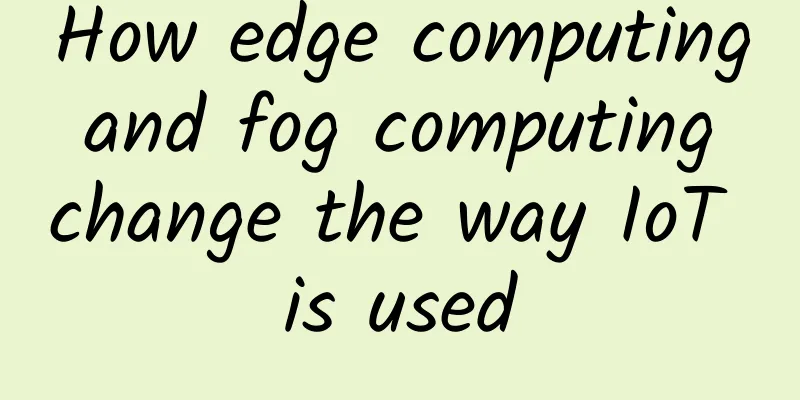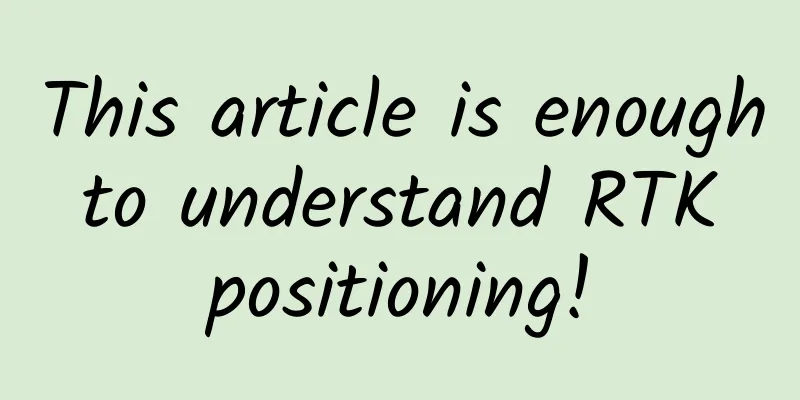How edge computing and fog computing change the way IoT is used

|
It’s hard to keep up with the latest trends and emerging areas of the industry when it comes to tech. Just take computing types as an example. As how and where we process data continues to change, we are limited by the limitations of hardware and connectivity. The term cloud computing has already occupied a place in the consumption concepts of most consumers. Edge computing can be seen as an extension of ubiquitous cloud computing and the Internet of Things (IoT). Although the concept of fog computing is slightly vague compared to edge computing, it and edge computing are two technical concepts that are between cloud computing and edge computing.
This article will explain what edge computing is, how it is growing in 2018, and how the industry should pay attention to it. Edge computing: mobile computing away from the core Fundamentally, edge computing is the movement of intelligence and computing from centralized data servers in cloud networks to hardware at the edge of the network. Instead of collecting data at a certain location and then sending it back to a central server for processing, sensors process the data on locally available hardware and only send the results to the cloud to ensure the immediate availability of information and to act on it without further processing. Moving computing to the edge has several advantages that can promote more ideal computing:
The advent of edge computing is definitely due to the availability and widespread use of cloud computing, as well as the increasing accessibility and affordability of IoT solutions. There are a lot of easily customizable and accessible SoCs, such as the Raspberry Pi, making edge computing even more feasible. Some analysts predict that edge computing will become an industry worth US$6.72 billion by 2022, with an annual growth rate of 35.4%. Fog computing: Changing the definition of edge The definitions of fog computing and edge computing are vague, and the industry has been trying to distinguish the two as separate concepts. In this regard, the most widely accepted concept in the industry is that in edge computing, data processing is done on the hardware that collects the data. Fog computing is when a subset of nodes sends their data to a larger central connection point, processing the data in the process of connecting to the larger overall central network. Whether it is edge computing or fog computing, the advantages are obvious. Fog computing eliminates some of the latency and bandwidth issues of sending large amounts of raw data streams to a central network, but it does not require each set of sensors to process the collected data. Practical applications of edge computing and fog computing 1. Self-driving cars The development of self-driving cars relies on the calculation of real-time traffic, obstacle and hazard data in order to make decisions quickly. In the event of a collision, the slightest delay can change the outcome. Although driverless cars may still need to connect to cloud networks to send, share and receive information, processing information locally is essential for real-time decision making. According to statistics, driverless cars collect and generate more than 3 TB of data per hour. If we want driverless cars to be truly realized, it will bring huge pressure and risks to cloud computing networks. Fog computing can also be used to analyze and calculate data about local traffic by collecting vehicle information, processing it, and then sending it to the entire cloud for sharing to achieve real-time analysis and decision-making. 2. Smart City Bill Gates recently invested $80 million to develop a smart city from scratch in Arizona. In cities that collect real-time data on traffic, pedestrians, lighting, building health, edge and fog computing will be essential services. Edge computing nodes can simultaneously calculate weather, visibility, traffic congestion, and infrastructure health information at high resolution, and still share the information efficiently and quickly through the cloud for residents or visitors. In many applications, some form of edge computing already exists. However, new technology use cases will help refine the technology, allowing us to develop more complex solutions that are easier to integrate. At the same time, 2018 will see edge computing and fog computing emerge as emerging areas of the mainstream tech industry. |
>>: Mobile layout: Do you enter from a single point or start with the platform?
Recommend
Wind River Alex Wilson: Integrated modularity is the development direction of avionics systems
[51CTO.com original article] At the just conclude...
Do I need to turn off data traffic after connecting my phone to WiFi? The operator gave the "answer"
Nowadays, everyone has a smartphone. As long as i...
Traffic scheduling: DNS, full-site acceleration and computer room load balancing
We have learned about how to deal with traffic pr...
4G networks are getting slower and slower? This may be true, but there is absolutely no conspiracy!
[[344211]] This article is reprinted from the WeC...
I've been waiting for 10 years for the technology that allows me to surf the Internet on airplanes. Where does it come from?
In the past, when we were on an airplane, the fli...
The 5G coverage of the three major US operators was accused of false advertising: Verizon can only be connected 9.7% of the time
5G communication networks are reportedly faster t...
Huawei Releases New Intelligent Network Equation: AI+SoftCOM = Autonomous Network That Never Fails
[51CTO.com original article] "Building a ful...
VMware SD-WAN by VeloCloud Optimizes Edge Device Connectivity
VMware SD-WAN by VeloCloud prioritizes centralize...
What else will we look forward to in the communications industry in 2023?
Hello everyone, I am Xiaozaojun. The joyful and ...
In 2017, the cybersecurity industry says no to black production!
[51CTO.com original article] In Keigo Higashino&#...
There will be a chance in 2020: Why is it so difficult to port your number? !
Number portability is an urgent need Number porta...
Next generation office software: collaboration, dual links and multidimensional tables
Airtable, an overseas multi-dimensional spreadshe...
How to quickly optimize your home Wi-Fi in 30 minutes? Alibaba engineers have a trick
Abstract: Modern people cannot live without mobile...
RackNerd Easter promotion starts at $10.78/year, multiple data centers in Seattle/New York/Dallas, etc.
I just shared the summary of RackNerd's histo...
The ranking of countries with the fastest internet speeds in the world has been revealed!
Computers and the Internet are one of the greates...




![[6.18] edgeNAT 40% off on all VPS annual payments, starting at 360 yuan for annual payments in Hong Kong/Korea/US data centers](/upload/images/67cac326847d1.webp)




